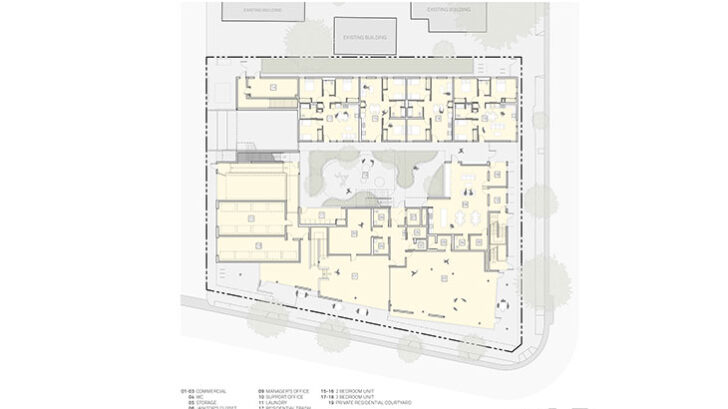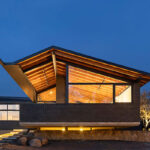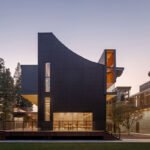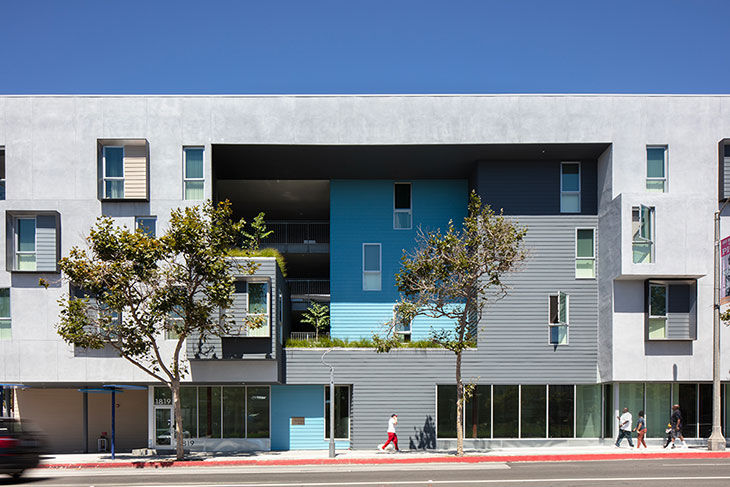
Brooks + Scarpa has recently completed an innovative architectural project in Santa Monica, California—1819 Pico. This development sets a new standard in sustainable and affordable housing, boasting a “Net Zero” design and LEED Platinum certification. Remarkably, it achieves a pEUI (partial energy use intensity) of 6.6, over 8 times more efficient than comparable buildings averaging 59 pEUI.
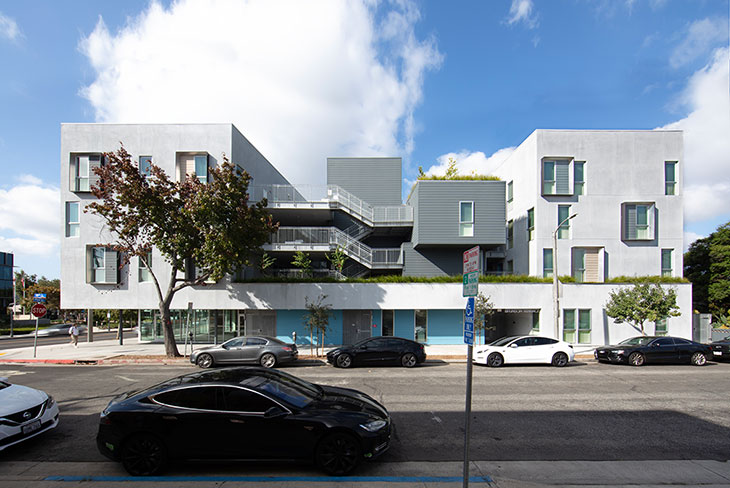
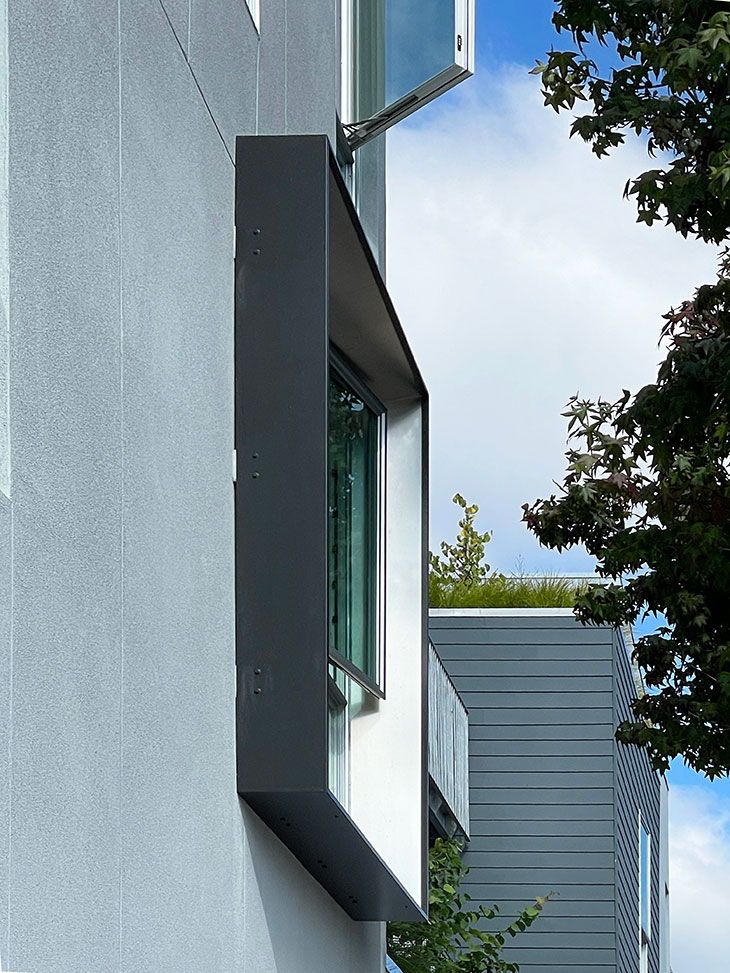
Departing from traditional defensive apartment structures with solid walls and fences, 1819 Pico adopts a carved-out cube design, becoming a promninent landmark in the neighborhood that prioritizes social spaces over private ones. Through strategic window placement, purposeful exterior circulation, and units wrapping around the edges, the 48 apartments are oriented towards socially engaging areas, spatially apart yet visually connected to each other and the street below.
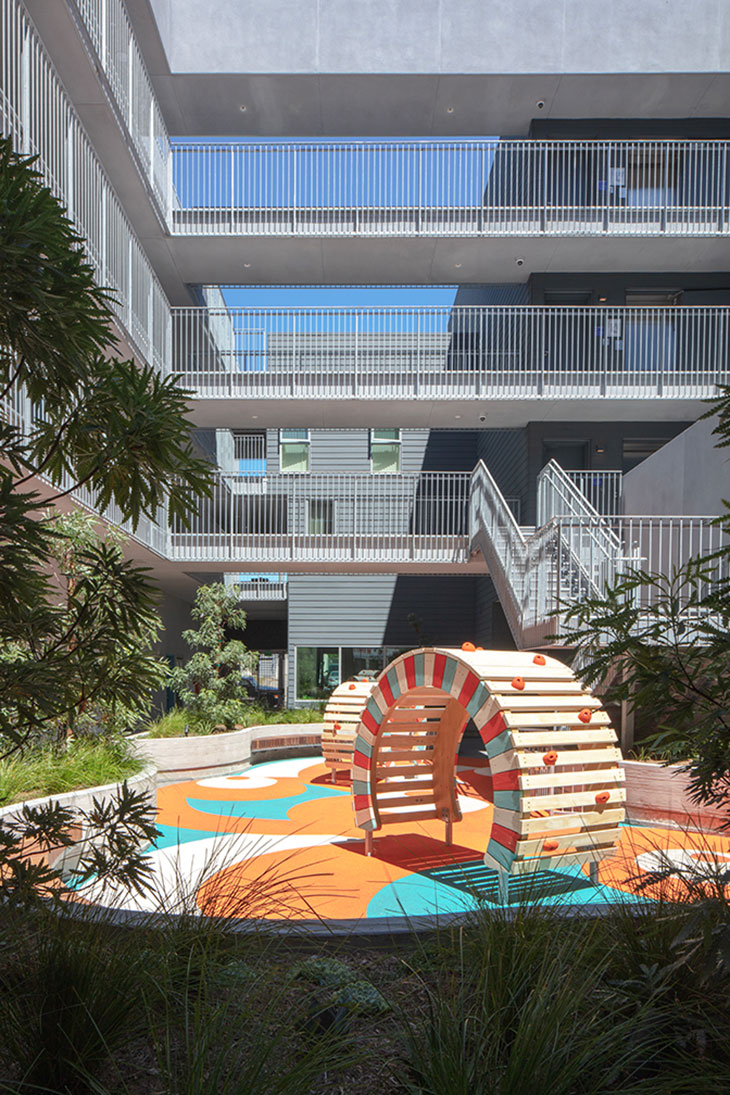
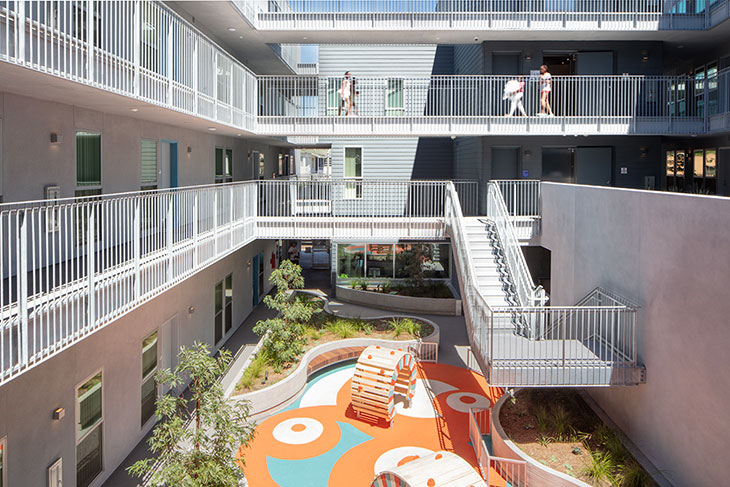
Courtyard apartments hold a significant historical presence in southern California, from Irving Gill’s 1918 Horatio Court to post-World War II Spanish Colonial Revival designs like Ambrose Gardens. According to Ken Bernstein of the Los Angeles Conservancy, these courtyard apartments were not only about architectural style but also a quest for indigenous architecture and neighborliness. They create a sense of belonging and community, offering safety and privacy to residents while serving as quasi-public spaces that mediate between homes and the street. For the broader cityscape, courtyard apartments represent an urban housing type seamlessly integrating into neighborhoods.
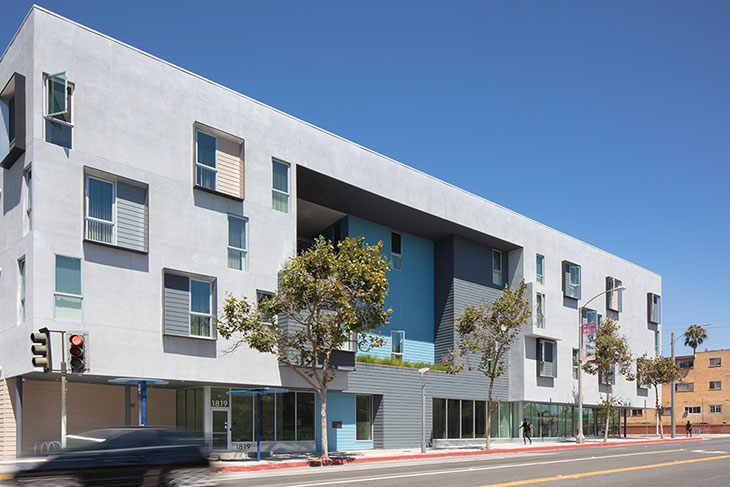
Strategically situated across from Santa Monica College, the $21.8 million, 49-unit complex includes community space and 6,700 square feet of ground-level retail. This project not only addresses housing needs but also fosters community engagement and economic activity. With its emphasis on sustainability, social connectivity, and historical resonance, 1819 Pico stands as a testament to innovative design meeting the demands of contemporary urban living while preserving the essence of Californian architectural heritage.
